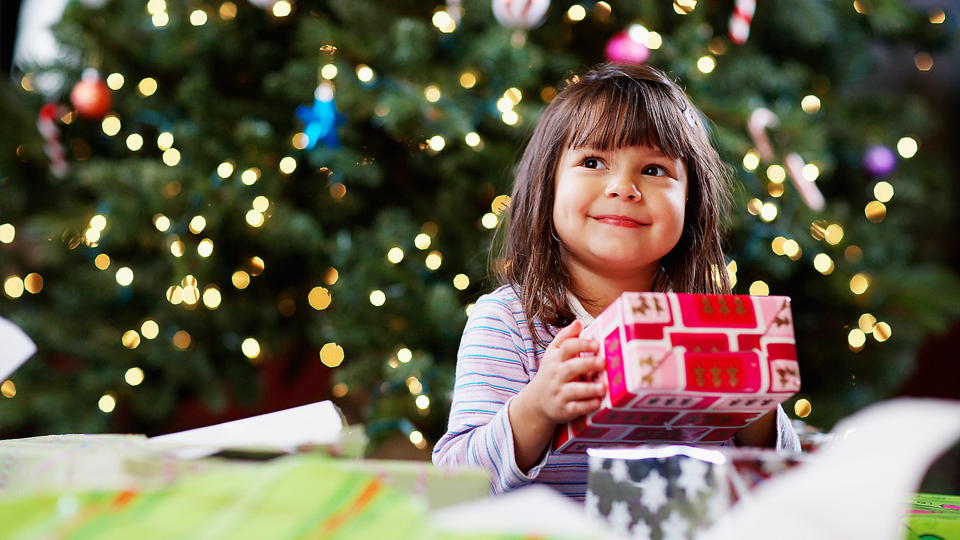5 tips for teaching gratitude

People who are grateful for what they have are happier. Teach your children to practice gratitude this season.
"Another girl had a cooler backpack!" complained my five-year-old on the first day of school. This time it was particularly grating—I had spent hours searching for pink fairy backpacks. Not purple, like most fairy merchandise, but pink...with rainbows. And if it was Disney, it had to have Rosetta, not just Tinkerbell. I showed my daughter the six available options, and when she saw one in particular, she danced with joy. Excited to be able to give her something special to start off her first year of school, I immediately bought it. And yet, there was no gratitude.
Sometimes the more (materially) we give our children, the less grateful they are.
Once I got over my own disappointment, I thought about ways we could cultivate gratitude in our children, including the kindergartner but also the preschooler, and maybe even the baby! Well, maybe the baby will learn more through observation but it is never too early to form the habit of gratitude!
- Practice gratitude (out loud) each and every day. Say, "Thank you for making me this lovely card!" or "I am grateful we are able to see this beautiful sunset together!" Then, ask your child, "What are you grateful for today?" While there is a value to releasing negative feelings, talking about positive feelings actually increases your contentment levels—and even possibly your health!
- Write thank you notes together. Even young toddlers can tell you why they enjoy a gift or draw a few scribbles on a note. Kids who have started writing can sign notes or fill-in the blanks. As a bonus, this is great for encouraging literacy.
- Make a ritual of it. Even if your family is not religious, you can say a non-sectarian grace at a meal. Not only does this encourage gratitude, it is also an exercise in patience. Plus, it helps to bring the family together. If a meal-time ritual doesn't suit your family, you can have it any time of day. Hold hands and share what makes you grateful.
- Work for it. One time my daughter accidentally broke a toy doing something I warned her was likely to cause damage. So, she paid for half the toy. Children can also earn special things they request through extra chores beyond their usual participation. When they connect effort to the things they like, they are more likely to appreciate what they have.
- Give until it feels good. Toddlers may enjoy receiving more than giving but reinforcing generosity also promotes gratitude. Rather than phrase the idea negatively ("Others don't have the nice things you do"), focus on the positive ("Look at how happy you made your friend when you shared"). Giving can empower children when they see the effects of spreading joy to others.
Money cannot buy us happiness. A Gallup survey of happiness around the globe found that while countries with a high quality of living often had the happiest citizens, there were poor nations that topped the list and rich nations that were at the bottom. What makes us happy is not what we have or do not have but, rather, our attitude.
The events of life may not be in our hands but our reaction definitely is. Each and every day we can show our children how to make the conscious choice to be happy.









